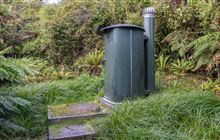Kayaking/canoeing guidelines
Introduction
Care for the environment when canoeing or kayaking.How to care for the environment:
- Protect native flora and fauna.
- Keep to tracks where they exist.
- Keep gear clean to prevent the spread of weeds and plant and animal diseases.
- Do not damage vegetation when tying up boats.
- Protect fragile sand dunes and river banks. Carry boats instead of dragging them. Tread carefully to avoid disturbing bird nests. On beaches do not leave boats in the fragile fore-dunes.
- Use gates, not fences, and leave gates as you find them. Only drive vehicles on designated roads.
- Take all your rubbish with you. Carry bags for storing your rubbish and pick up any you find.
- Conserve waterways by not polluting them with soap, detergents or food scraps.
- Make provision to carry out human waste where conditions are likely to result in waste being a significant part of the impact of the group. If there are no toilets, select sites 100 metres or more from water courses. Dig a hole 15–20 centimetres deep.
- Always seek permission to access private land.
- Only light fires where permitted and find out about any fire bans or restrictions before you set out. Where possible use portable fuel stoves for cooking instead. If you do require an open fire;
- Collect only fallen timber
- Use fireplaces or old fire scars if available - do not create new areas
- On beaches, build the fire below the high tide line
- Keep fires small - large fires are wasteful
- Carefully select a site away from bushes, trees and rocks which could be damaged
- Do not surround the fire with stones (leave the stones where they are)
- Do not dig a pit
- Extinguish the fire with plenty of water long before you intend to leave.

